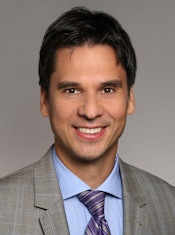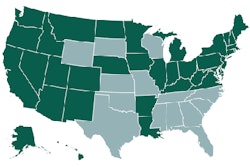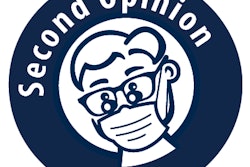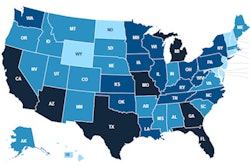
More children than ever before are visiting the dentist, and that could be because 90% of children in the U.S. have dental benefit coverage. These record statistics are just the latest in a long trend that show federal dental health policy may be having a real impact.
 Marko Vujicic, PhD. Image courtesy of the ADA.
Marko Vujicic, PhD. Image courtesy of the ADA.The data come from the ADA Health Policy Institute, which has tracked dental care utilization, coverage, and barriers for more than a decade. In a November 1 webinar discussing the new reports, the institute's chief economist, Marko Vujicic, PhD, said the trends for children are straightforward.
"There are big increases in the percent of children who have dental coverage," said Vujicic, who is also vice president of the Health Policy Institute. "That's driving cost barriers down and driving dental care use up."
Utilization, benefits, and barriers for kids
The percentage of 2- to 18-year-old children who have visited a dentist has risen for several years, and 2015 was no exception. Dental care utilization hit an all-time high of 48.5% that year.
"This is the highest it's been since data have been recorded," Vujicic said. "That's pretty much the conclusion we have when we update this data. We continue to see rising dental care use among children."

Low-income children are the main drivers behind the continued increase in kids' dental visits, Vujicic said. While disparities still exist between high- and low-income children, those disparities have also continued to narrow over time.
Children set another record in 2015 for the fewest number of kids without dental benefit coverage. Only 10% of U.S. children didn't have any form of dental coverage that year, the lowest it's ever been.

The emphasis on public insurance, notably through Medicaid and Children's Health Insurance Program (CHIP), has fueled more kids getting dental benefits, Vujicic said. In addition, dental care is considered an essential health benefit for children under the Patient Protection and Affordable Care Act (ACA), he noted. The expansion of public programs and compulsory health benefits are tied to the continued increase in dental care visits, he added.
"This 10.3% of children who lack dental coverage is the lowest level ever, and it's down significantly for just five years ago. So what are we doing?" Vujicic said. "We're expanding dental coverage pretty significantly to children through the expansion of public programs that are putting more low-income and vulnerable children into dental care, and that's driving up dental care use."
Similarly, perceived cost barriers to dental care are continuing to fall for children. Only 3.8% reported that cost was a barrier to care for kids, the lowest of any surveyed age group. This statistic shouldn't be surprising considering the trends for dental utilization and coverage, Vujicic said.
"We just showed that 90% of children have dental coverage and that coverage for children tends to be extensive both on the private side and on the public side," he said. "We've steadily been increasing dental care use among low-income children, and that's driving the increase among children at large. Part of that is because cost barriers are falling."
Tangible results
The increase in dental care coverage and dentist visits for children may be tied to better health. As kids have continued to get dental care and visit the dentist at record rates, the rates of untreated caries have fallen for all children.
"We're narrowing disparities in untreated caries for children," Vujicic said. "Those rates of untreated caries are dropping for all income groups, especially low-income. They're dropping for all race groups, especially nonwhite."
If everything stays the same with public health policy, it's likely these trends will continue, according to Vujicic. Of course, there is uncertainty about the future of CHIP, Medicaid expansion, and essential health benefits as the current administration rethinks the U.S. healthcare system. But perhaps that makes this the ideal time to discuss how to move forward with oral healthcare policy for everyone in the U.S.
"All of the stuff we've done for kids is starting to have a real, tangible, sustained impact," Vujicic said. "We're not seeing those same gains at all among other groups, and I think that's an important policy question to debate, because we have certainly approached policy very differently for children versus adults and seniors."



















